Content only for logged-in users. You can ask the blog owner for credentials if you know him.
To Hiroshima
Next morning we had to get up early. For the non-orchestra members, meeting to leave the hotel was at 7:45. And a breakfast with a wide variety of food was to be experineced before that. Plus we had to say goodbye and leave our son to the other group, the orchestra members. These took a plane shortly after we had left to Nagoya, where in the nearby town set, the partner school is located. For the around 20 “visitors”, a train from the airport took us to Tokyo Shinagawa station where we bought some food, the so called bento boxes and changed to the fast train Shinkansen.
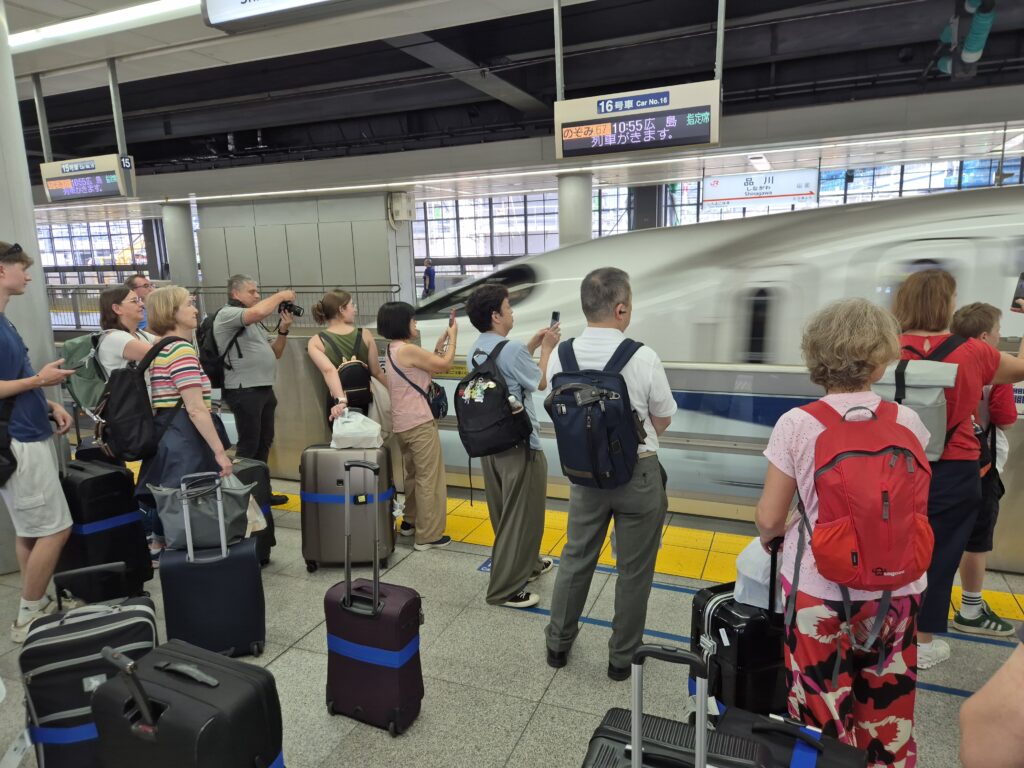
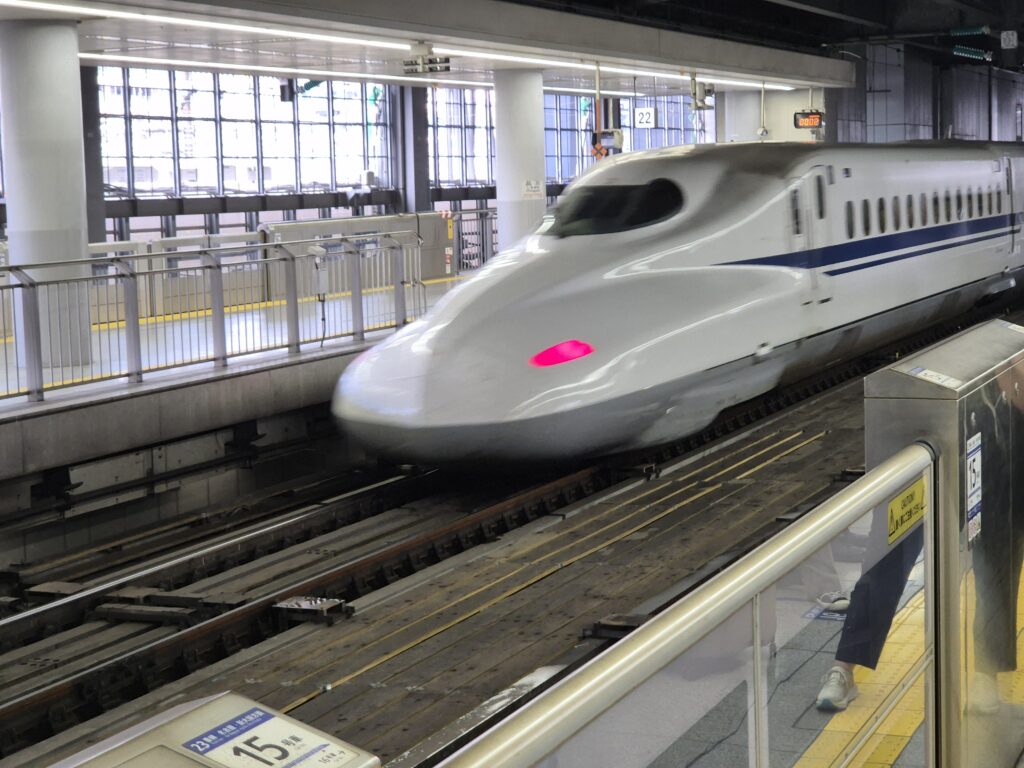
Shinkansen made the around 800 km in less than 4 hours. So we arrived in the sunny, hot and humid Hiroshima still before 3 p.m. After a quick check-in in the hotel next to the train station and an hour of rest a guided tour from a German speaking tour guide was on.
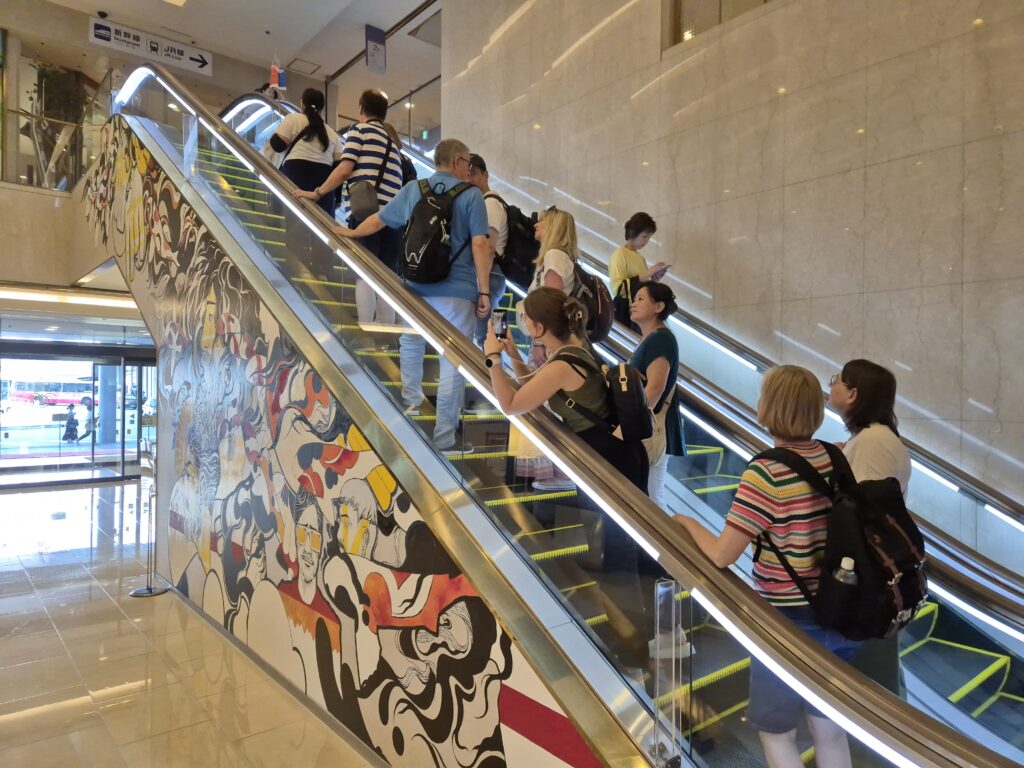

The most important event in Hiroshima’s history took place on August 6th 1945, we were here just 5 days before its 80th anniversary. And of course it was number one on the list of things to visit. Indeed one part is visible even before any sightseeing. In the centre of Hiroshima, there is no “old” building. In a circle of more than 1.5 km from the center of the detonation nearly every building was damaged to the floor. An exception is the “dome” which reportedly lost its copper roof, through the heat wave before the pressure wave came, which allowed the pressure to “escape” through the roof instead of cracking the walls.


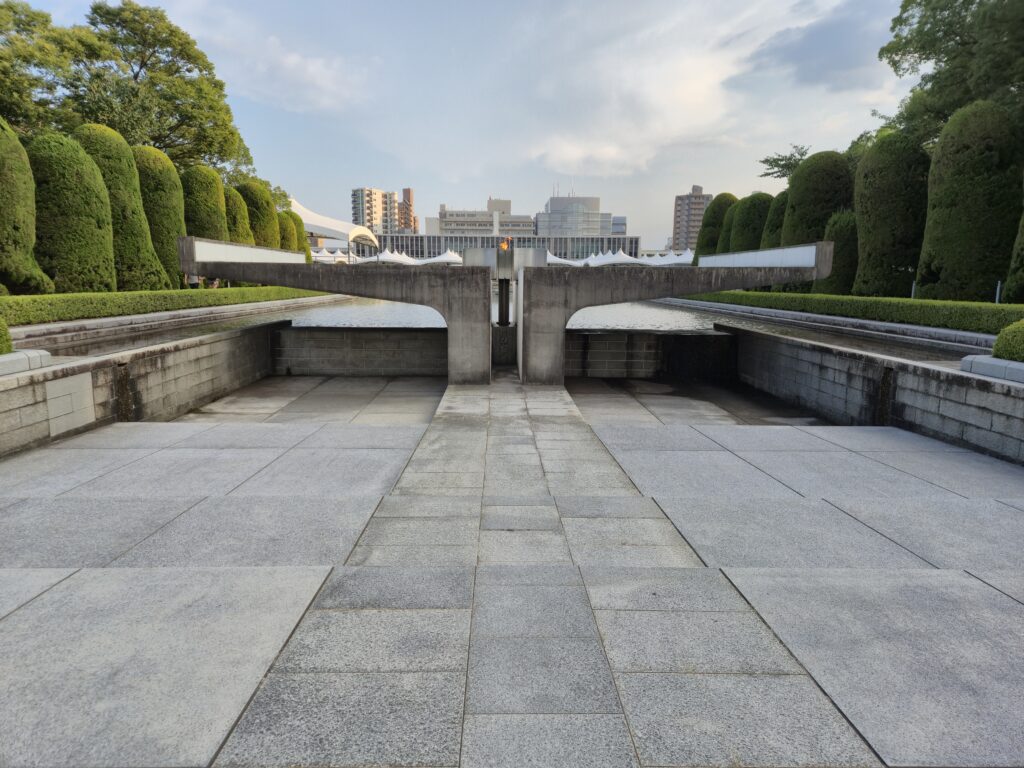
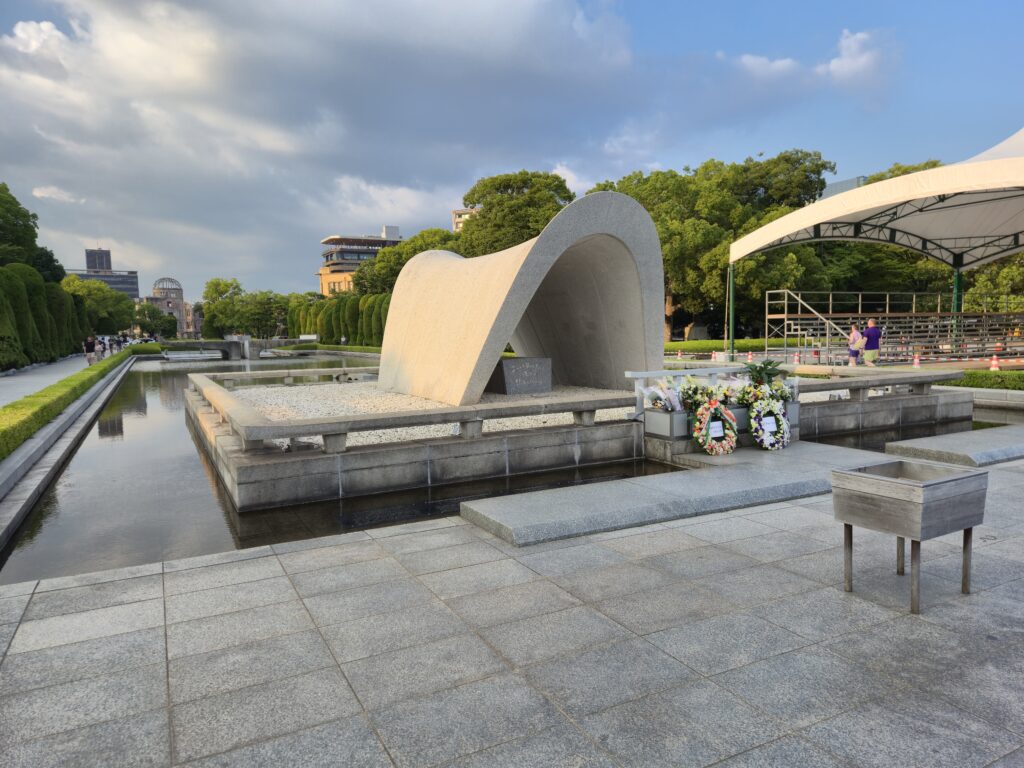
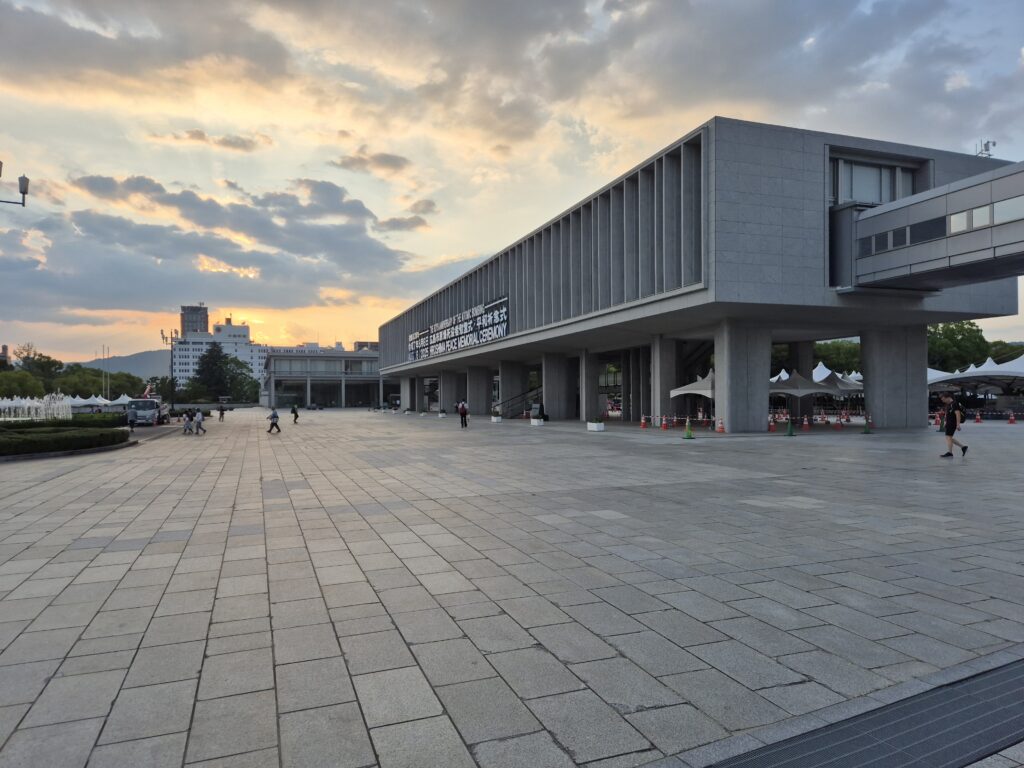
After getting impressions of unimaginable suffering in the museum, a dinner in town with some of the group ended the day for me.
Infrastructure
While so far everything was pre-booked and prepaid, the dinner was the first item where we needed to pay ourselves. So how to get some money. A little investigation in advance made us confident, that credit cards are widely accepted and cash is also frequently used.
Furthemore we found that so called Suica cards (or Pasmo cards named by another supplier) are widely used. They were designed as debit cards for public transport. You can charge them with some money and use them to pay train or bus rides. Yet as they were widely used, a lot of convenience stores and vending machines also started accepting Suica cards. They ususally require a deposit but there is a specific Welcome Suica for tourists, that does not. This one is valid only a few weeks, just right for us.
So we set out to the airport again, to a) withdraw some cash, b) have some dinner, c) get ourselves Suica cards and top them up with some credit and d) see how we can use a Suica crd in real life. The ATM was an easy task, just I never know whether it’s cheaper to have the bank account debited in euro or yen. Having some bill in hand gives already a good feeing. In an average Japanese fast food restaurant, we ordered chicken teryaki (twice) and for me an udon bowl with fried tofu.
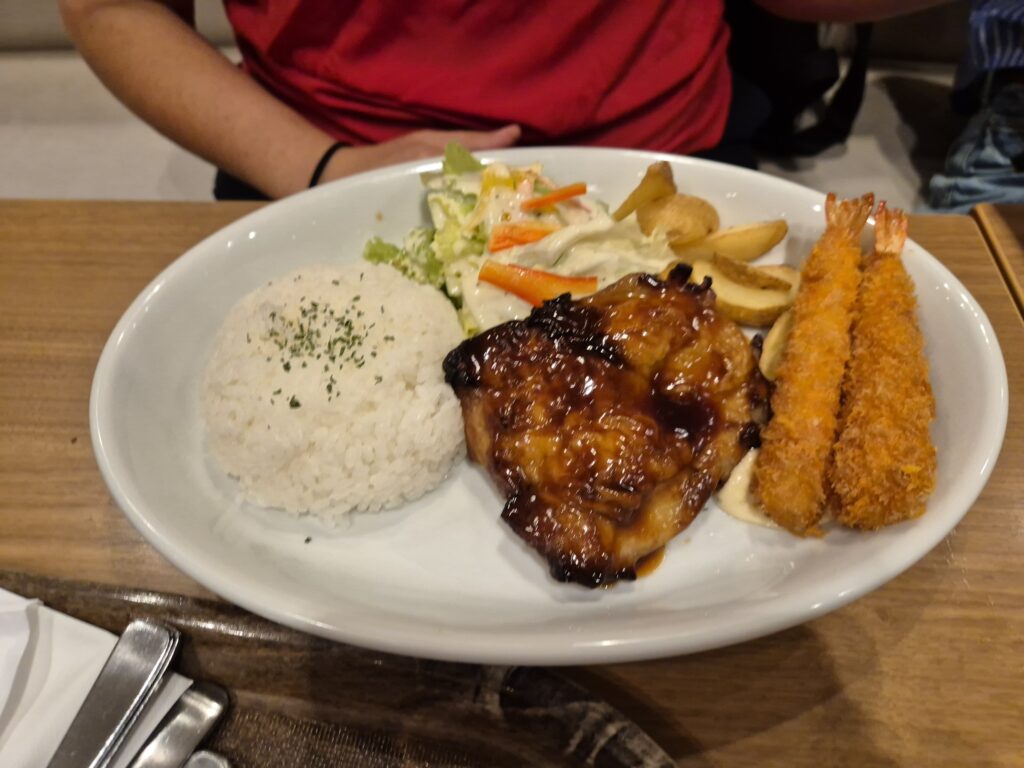

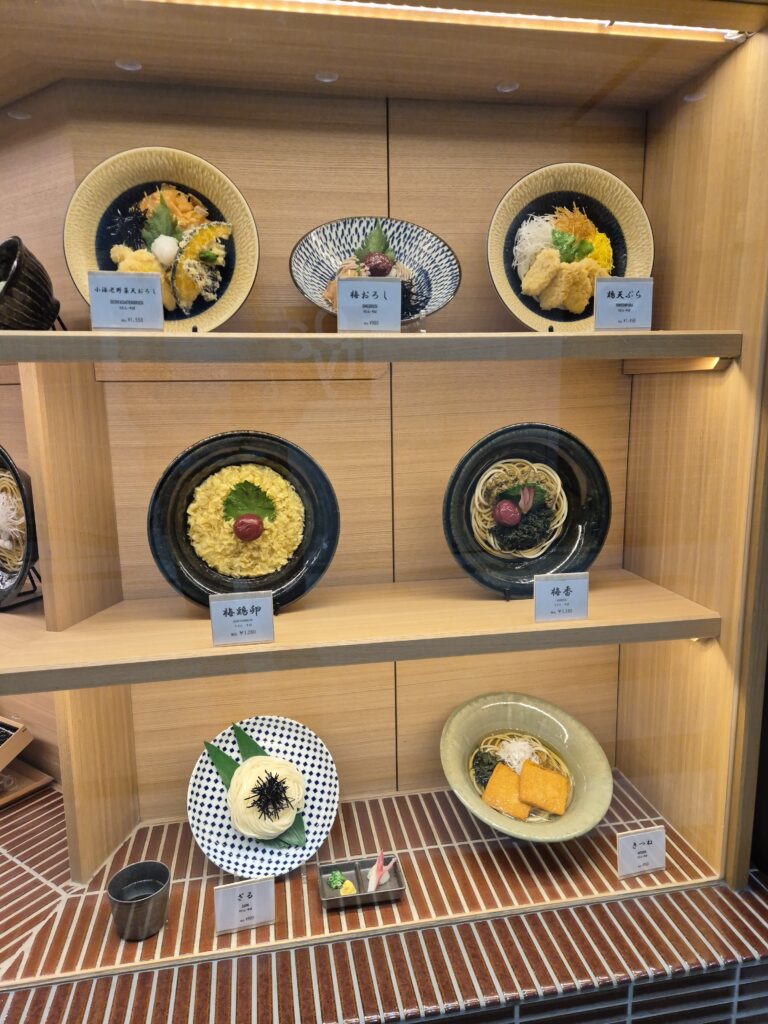
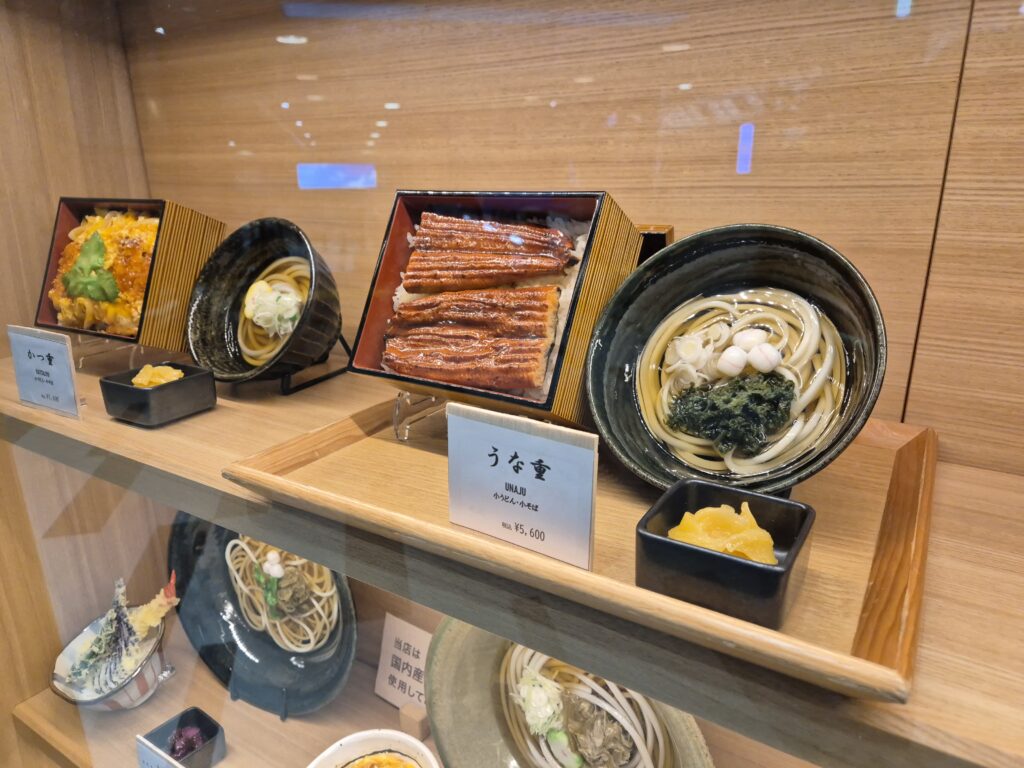
Also the Suica card was easy to get. Close to the railway station underground of the airport, the friendly lady at the information counter pointed to two machines that returned you a Suica cards after you entered your wishes and a credit card (bills would have been possible alternatively).

We felt set to approach the next day when our group split up in the orchestra members (with our son) that flew into Narita to meet the fellow students (and the guest parents), while the “visitors” are supposed to take the fast train to Hiroshima.
The last “adventure” of the day was to buy something with the Suica card. We decided for a bottle of “Pocari Sweat”, a name noone would use for a refreshing isotonic (in fact somehow salty tasting) drink. We heard of this in a book (Abroad in Japan) that we used as preparation and couldn’t resist to taste it. I would call it “interesting”, might serve the purpose of rebuilding you from dehydration but other than that I don’t see the point in drinking it. Mak your choice at the vending machine, hold the card to the sensor, take the bottle, done. You even get displayed how much credit is remaining on the card after the purchase.
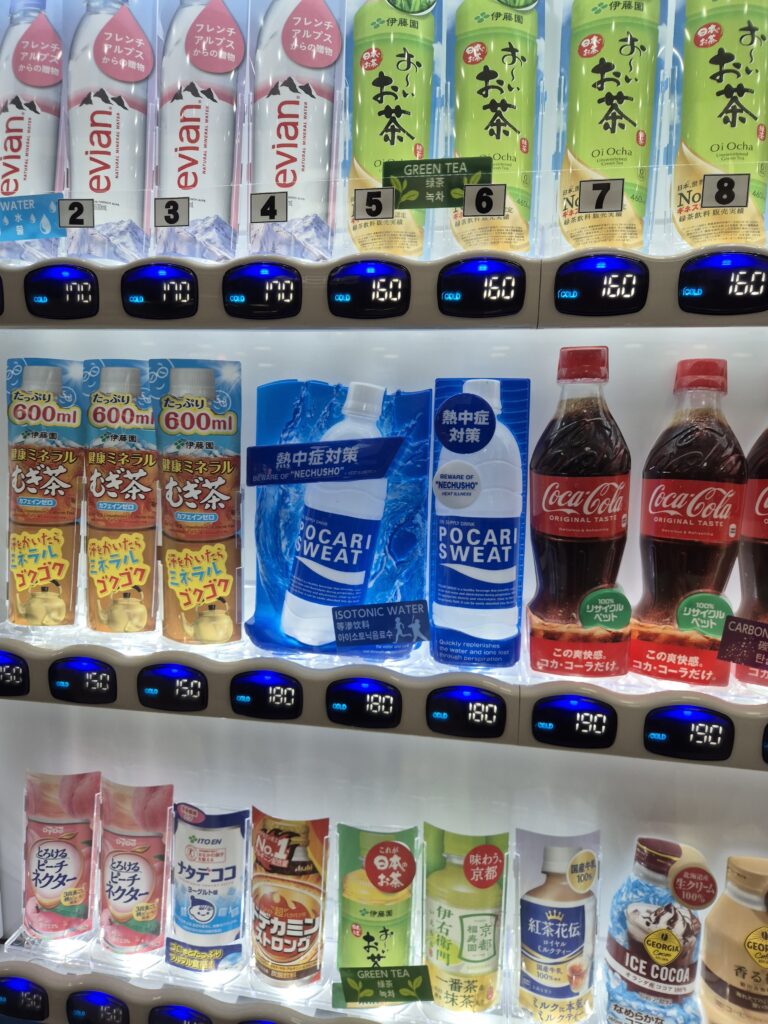
Konichiwa
Content only for logged-in users. You can ask the blog owner for credentials if you know him.
A Train to the Past (Epilogue 3)
Content only for logged-in users. You can ask the blog owner for credentials if you know him.
Dirt Stresses (Epilogue 2)
Making India cleaner is a big challenge. What experienced as dirty, many Indians don’t, I guess, as they consider this state as normal and do not see a problem in it. We saw people unpacking food in a car and throwing out the packaging out of the window on a crowded street. Nobody bothered. We saw dumped trash directly in front of the straw huts (see below) where we “resided” in Hampi and the owners of the accomodations didn’t seem to be aware that litter puts people off, when they spend their vaction there.

The dirt that felt nearly omnipresent was for me clearly the major downside of our vacation. When you feel dirty, you don’t feel comfortable. In some places I had the impression that ther is just noone taken litter away, so that the people “producing” it just had to find a place to dump it. I recall only two handful places that I found explicitely clean: The “brahman street” (see Kochi post), the Vector office, the houseboat in Allepey, the ancient temples in Hampi and most of our hotel rooms (bathrooms excluded). That was one reason why the hotel room had its role as “safe space” and going out sometimes appeared like “exploring the jungle”, which of course is nonsense, but feelings are often not following some mindful sense. One other reason for the safe space hotel room was of course the air conditioned climate versus the 28 – 32 degree temperature outside with its 50 to 70 % humidity, that stressed my mid-european body, an in the hotel we could literally “chill”.




So, making India cleaner is a big challenge. But one that has been accepted by the state. The Clean India Mission (https://en.wikipedia.org/wiki/Swachh_Bharat_Mission) started in 2014 and wants to make India cleaner. While it’s not primarily aiming at throwin away garbage (but public defecation, which we saw only rarely) the mission’s thought of cleanliness shall come into every indians’s mind. this is reflected in the fact that the missions icon and slogan “One step towards cleanliness” can be found on every bank note of the current series. Also schools and public buildings promote the mission on their walls.

Given the success of primary goal of the campaign [1] within few years, we can imagine tha India is capable of much more progress in therms of cleanliness and we will see more pictures like this tha the first one.

P.S: I also saw people throw out food packages out of the car in Germany, especially near fast food restaurants, so also in Germany we’re far from perfect.
Traffic on Three Wheels (Epilogue 1)
Content only for logged-in users. You can ask the blog owner for credentials if you know him.
The Way to Souvenirs
The last day we wanted to do some shopping for home. Especially spices were on the todo list. It’s a possibility to take home some of the Indian flavor that was a good company to us in the last nearly 2 1/2 weeks. From the travel guide we knew that Rikshaw drivers offer guided tours through the town for very little money. Also here they make part of their revenue by commission from souvenir shops where they drop their guests. We first walked to clothes store (Fab India) and declined all offers. One guy was insisting enough to wait in front to the Fab India after I told him, we are later on looking for spices.
So it was two shirts for me (nothing for the others, oops) and then we let us catch by “Tanner” who spoke good English. The Tuktuk was to small for four, but he had his friend already in standby, so we started with the beach, the church San Francesco, where Vasco Da Gama is buried.


We’ve also been shown big and old trees (Banyan and a “rain tree”) and some stories around it. But, honestly, we were rather full of information, so a big part of it ran through and didn’t last. Nevertheless the dimensions of the biggest tree in town were overwhelming, I estimated 20 meters in each direction from the trunk.

One thing I kept in mind, as I found it funny. The house where Vasco da Gama once lived was often backdrop for Indian selfies. I never wondered about that, but the reason for the selfies was rather that the house appeared in a Bollywood movie than the earlier history. Even in Google Maps the spot is marked as shooting location (https://goo.gl/maps/R11Jf2aW5XV9uWKx7). Also some less historic sites we found rather interesting. We discovered where the laundry goes. According to our guide (no reason not to believe) this place was run by a caste that does this job for ages and all professionally done laundry in Kochi goes there. We saw, how to hang clothes without clips, the only washing machine – that has been donated by the government but did not meet the quality standards of hand wash – old electric irons for flattening the laundry and even older irons, heated by ember from coconut shells. We left a few rupies in the donation box.




The cleanest street in Kochi, Tanner said, was a street where only Brahmans (the highest caste) live. Indeed the walkway would match traditional Swabian standards. There was even an iconic drawing in front of every entrance door, painted anew every day. If this has to do with the superstition that our guide mentioned as a characteristic of brahmans, I don’t know.


Then the sales part of this trip followed. We were dropped off at three souvenir stores, all with multiple stores, they offered all from sculptures in the size of a thumb up to carpets for a castle, scarves and clothes of all kind and also various jewelry. We had some things presented to us and it did look nice, especially carpets impressed us, but neither die we have a demand or place for it, nor did we intend to spend the sum that was required to pay someone for more than a year of work. So we had a look around, and did only show interest in small figures of Ganesh as we wanted to bring one of these home. This didn’t stop the salesmen from pulling out a lot of other stuff but that was their job. At the third store – the driver told us that he would get gas payed by the store if we bought something – we bought a small wooden figure.
Then finally we headed for the shop with spices. We smelled and tasted a variety of powders in many shades and Andrea as well as Fiona made their selections. Besides masala, peppers, coriander, and so on we also bought a preparations to make masala chai (tea), the drink that was offered in nearly every place we visited. Its taste varied but the main ingredients were black tea and a mixture of spices plus mostly sugar. So we seem to be prepared to also have this experience at home – probably after some trial and error on the dosage straining.


The amount that was due for the guide and the two rikshaws was in the end calculated differently by the driver and by me, maybe because our turnover in the souvenir stores was not as expected, but as always there was an agreement end my Indian counterpart did shake his head in the usual way, meaning “OK”.
The next day we checked out of the hotel and took a taxi to the Kochi airport from which we flew to Mumbai, where we didn’t even leave the airport but directly headed for the next plane back home to Germany.
Last Exit Kochi
Two more nights until we fly back home, these should add to the relaxation, also we wanted to wanted to buy a few souvenirs to take home. We have chosen Kochi for that, a town at Kerala’s coast with a lot of history and international flair. As for most things, two stories can be told as there are always the other side of the coin.
A) Our taxi brought us directly to the Tower House, a hotel that has been recommended to us by a traveling family, we met in Goa. The hotel was directly in the Fort district, as the last house to the ocean front. It was a historical building from the 18th century, with a lot of work invested in restoration. As we entered the the lobby, teak furniture fit well to the yellow and white painted high wall, that were hung with picture showing scenes from various religions, the interior was nicely designed, handcrafted wooden exhibits completed the scene. Our rooms were spacious and have been decorated with the same sense of style. Stepping out to the backyard, a pool was awaiting us 15 m long pool was awaiting us and soon we were diving into it. We enjoyed this some hours until Andrea and Fiona had an appointment for a traditional oil massage. Levin and I strolled around in town meanwhile and found a bookshop (Idiom Booksellers) and a music shop ( ) for some souvenirs. After the ladies were back from the massage, we had a delicious dinner with korma, curry and fried vegetables before going to bed early.







B) The taxi from Allepey to Kochi had to stop half way as we heard the sound of water burbling from the dashboard and saw water running around the shift stick. A problem with the AC drainage made us get out and the driver had to wipe out the water from the legroom. My daypack, already slightly wet, had to go into the trunk for the rest of the drive. When we got out of the taxi in front of the hotel, we directly could smell the sea – and fishing that was done some 50 meters away. After checking in, we were shown our rooms in the ground floor that had a distinct smell, something mouldy, a bit like ammonia like we know it from very old farm houses, something hard to get out from the ancient walls, especially in a very humid area. Nevertheless it caused some headache to Andrea, why – after rethinking it twice – she asked if there was another room available. The manager wanted to check. In the pool we all felt comfortable, just after some time some of us had some itching on the skin. Maybe there was a lot of chlorine needed, to keep the water clean. We then rather laid outside in the shade. Yet the walls around the estate could not keep the smell of fish outside. well it’s a very central location. While Andrea and Fiona were off to an oil massage, Levin and I meanwhile walked though the hot town, again repeatedly ignoring or shaking off countless riksha (tuktuk) drivers who offered us their services, mostly a city tour for a “very cheap price”. After the oil massage of Andrea and Fiona they had to wash their hair multiple times, to remove the oil in it, yet this is probably part of the fun. After dinner, two of us could temporarily move into another bedroom for the first night, the next one was still uncertain. With this prospect, after dinner, we went to bead early.



So you can choose which story you like better, it’s the same persons and the same day. Some people can hopefully see the sunny side only, indians especially I think, as for them even the not so good aspects of life seem to be “no problem, Sir”. For us, the mix didn’t bring all the relaxing vibes we wished to have.
Towards Relaxation in Kerala
We already had had a load of impressions, of which I could describe only the most outstanding ones. Mysure was the last “sightseeing” place, towards the end of our holidays these should get a more relaxing touch as after our return only Levin had one more week off. So besides broadening our mind we also wanted to get some rest. The state Kerala in the south was said to be a good place for that. It has a long cost and behind, a wide net of canals and lakes in-between villages and rice fields. One day and night on one of the many houseboat should get us in the relaxing mood. The experience had been arranged for us by my colleague Kedar.
Yet we had to get there before. A train from Mysuru would bring us to Allapuzha (Allepey) and a taxi from there to the boat. All worked as planned, the 15 hours overnight train ride was an experience maybe to be told in a post on transportation (that has yet to be written).
But once there, we were welcomed by the crew of three persons with a fresh mango drink, placed our backpacks in the two double rooms and directly set off. The boat – although we didn’t see it from the outside at first as we boarded through two other ones directly aside of it – was the classical style with a roof that looked like made from straw.

Yet it was equipped with air conditioning for the bedrooms (which we used for the night only). The navigator was sitting in the very front, behind there was an shaded but open to the sides “lounge” with table and armchairs. From there we could watch the scene with water hyacyths passing us by slowly… slowly.








After having a shower and the taking some pictures of the scene we were served lunch, vegetarian as we ordered it, and probably less spicy for western tourists, but this was OK. There was fried beans, a one-pot with lentils and other vegetables (dal), coleslaw salad and cooked potatoes both with coconut, but the potatoes with curcuma, and nan bread. I’m sure there are specific names but I cannot keep them in mind.

After lunch I shortly fell asleep. The slow motion caught me. I spent the afternoon snoozing on and off, watching the banks of the canals and waving to people there who mostly waved back while the boat made its way from one canal to the next. Tea time with baked bananas as a break. Nothing more to say. We once stepped out to have short walk, when the boat was tied up for the night, but our urge to explore more has been surpassed by our urge to relax. Dinner was evenly delicious as lunch and the baked bananas for the tea break. We spent the evening in the outdoor lounge that had to be covered from one side after a rain shower set in, talked and looked into our mobile devices, but as it had been dark already since around 6 p.m. we went to bed at 10 and had a relaxing night.
Next morning started early (7:30 h) with breakfast, again somehow surreal, the four of us sitting in a very spacious and clean boat on a very calm canal – while India for us showed itself in the last week often loud, crowded and dirty. We surely haven’t see all sides yet. The cruise ended at 9 a.m. in the spot where we started – I lost track on which waterway we have been anyway rather soon – and the taxi driver picked us up as arranged the day before. Thank you Evergreen Tours. Thank you Kedar.

